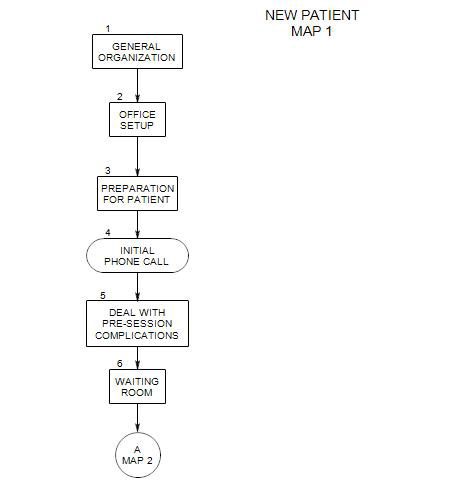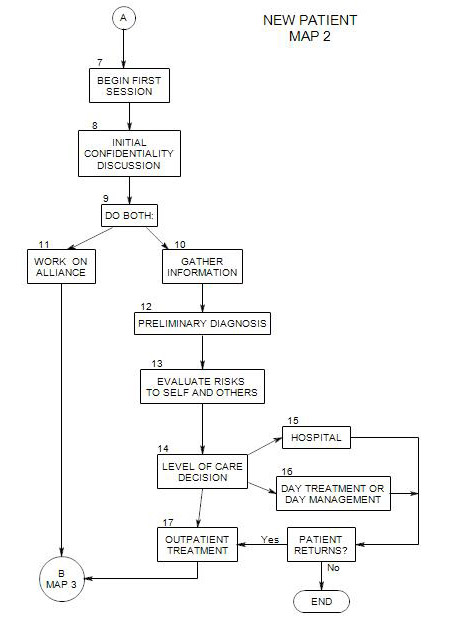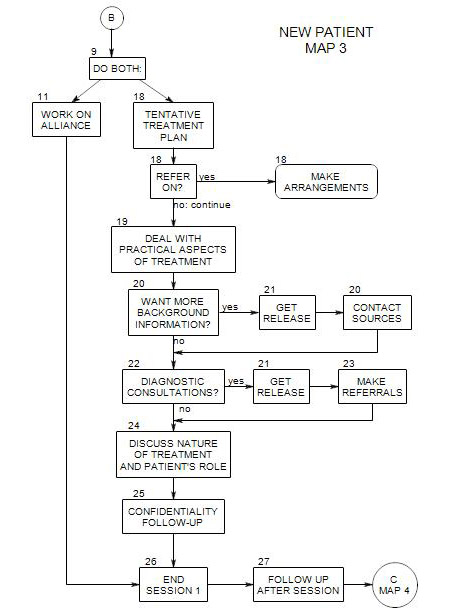-
Appears at the bottom of Map 4
The assumption made here is that there is value in starting with the patient’s issues and symptoms, and refining your diagnosis and treatment over time.
29a. Some Options
Other maps on this site are directed to specific treatment problems. For now, the range addressed here is limited but expanding:
The range is actually greater than it may seem. The alcohol map addresses a variety of forms of misuse, including psychological dependence, physiological dependence, and abuse. It also takes treatment from intake through to termination, with an outline of all the steps in between. The same is true for the maps on depression and anxiety.
29b. Caveat
Note in using the other maps on this site that patients will commonly have more than one issue, and the maps simplify things somewhat in order to be clear. With real people, you may have to juggle treatments even more than shown here.
That is the nature of treatment. You can start with a logical framework, and it can be very helpful for orientation and structuring the work. But real people are complex, and your judgment and intuition are needed at every step of the way.
29c. Example: Anxiety
You begin to suspect that a person is fearful or anxious for any of several reasons:
- He/she tells you that he/she is anxious or tense a lot of the time
- Someone else says that he/she is anxious or tense
- The person seems nervous in the session
- He/she describes experiences or behaviors that could imply underlying anxiety
Once you suspect that the person is dealing with anxiety or fear, you can watch for or ask about other symptoms that could be caused by it and begin searching for sources. The map on anxiety or panic can be useful here.
You may also note that a person appears to be avoiding certain places, events, relationships, opportunities, objects, etc. This can lead to further exploration as to what is being avoided and why.
Often a person who is having panic attacks will begin by asking for help with them. Here again, the map on anxiety and panic can be useful in developing a treatment plan.



